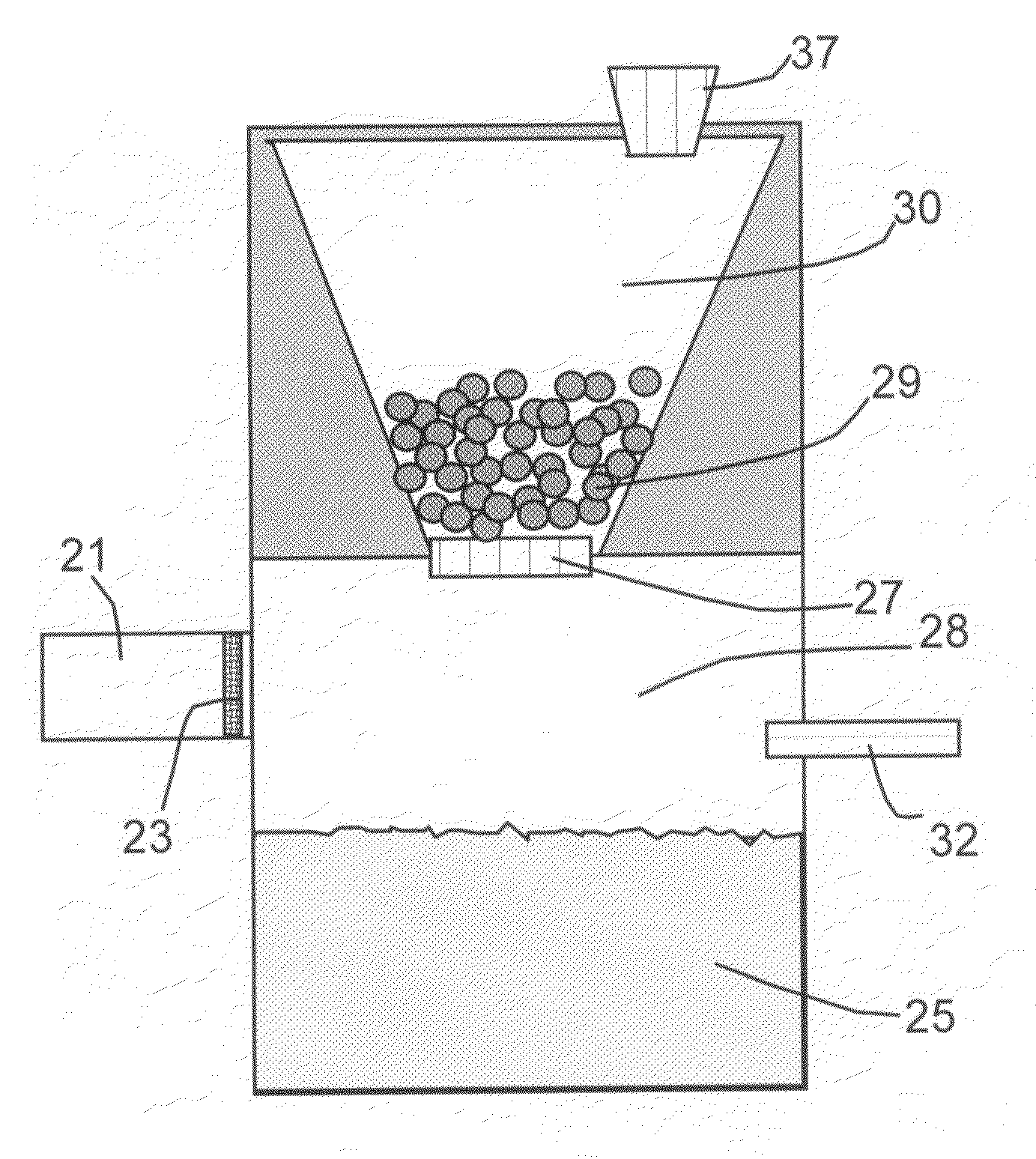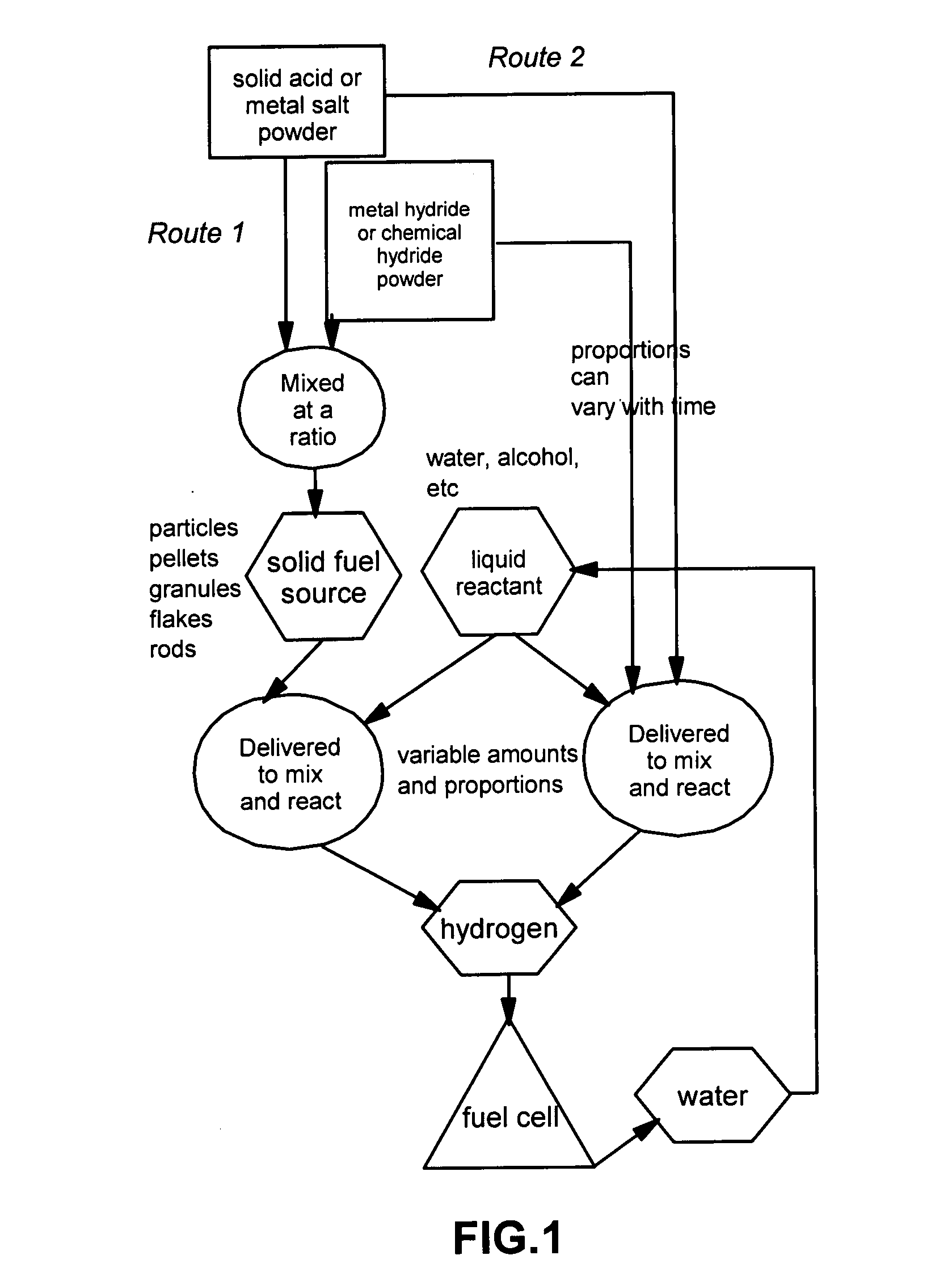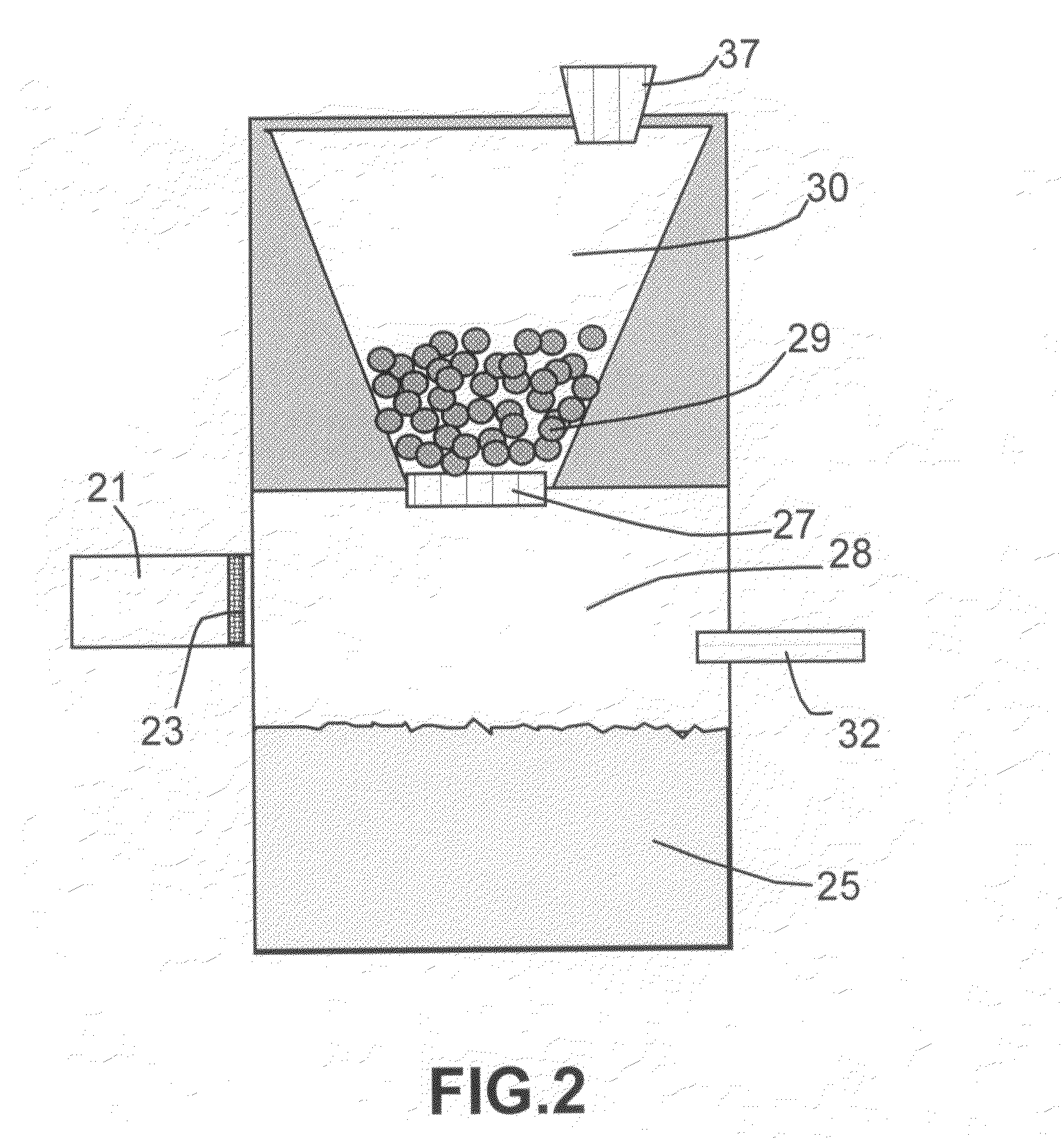Method of storing and generating hydrogen for fuel cell applications
a fuel cell and hydrogen storage technology, applied in the field of hydrogen storage and generation methods, can solve the problems of unsafe, unportable, and high cost of hydrogen storage containers, and achieve the effect of prolonging the shelf life of metal hydride and being convenient to deliver
- Summary
- Abstract
- Description
- Claims
- Application Information
AI Technical Summary
Benefits of technology
Problems solved by technology
Method used
Image
Examples
Embodiment Construction
[0033]The present invention provides a hydrogen gas storage and supply method wherein hydrogen is stored as part of a metal hydride or chemical hydride and hydrogen is released when the hydride is allowed to contact and react with a liquid reactant such as water or alcohol. Typically, the reaction between a hydride and a liquid reactant is accelerated by a reaction-controlling agent such as an acid or a metal salt in a solid state, without using an expensive catalyst such as nano-scaled metal particles. In some cases, the reaction-controlling agent serves to prevent or slow down an otherwise violent reaction. The procedures are schematically shown in FIG. 1, which indicates two preferred routes to follow:
[0034]In one preferred route (Route 1), the hydride and the reaction-controlling agent are pre-mixed at a desired proportion to make multiple particles in a form of beads, pellets, granules, flakes, capsules, or any other solid powder form. As illustrated in FIG. 2, solid hydride po...
PUM
 Login to View More
Login to View More Abstract
Description
Claims
Application Information
 Login to View More
Login to View More - R&D
- Intellectual Property
- Life Sciences
- Materials
- Tech Scout
- Unparalleled Data Quality
- Higher Quality Content
- 60% Fewer Hallucinations
Browse by: Latest US Patents, China's latest patents, Technical Efficacy Thesaurus, Application Domain, Technology Topic, Popular Technical Reports.
© 2025 PatSnap. All rights reserved.Legal|Privacy policy|Modern Slavery Act Transparency Statement|Sitemap|About US| Contact US: help@patsnap.com



